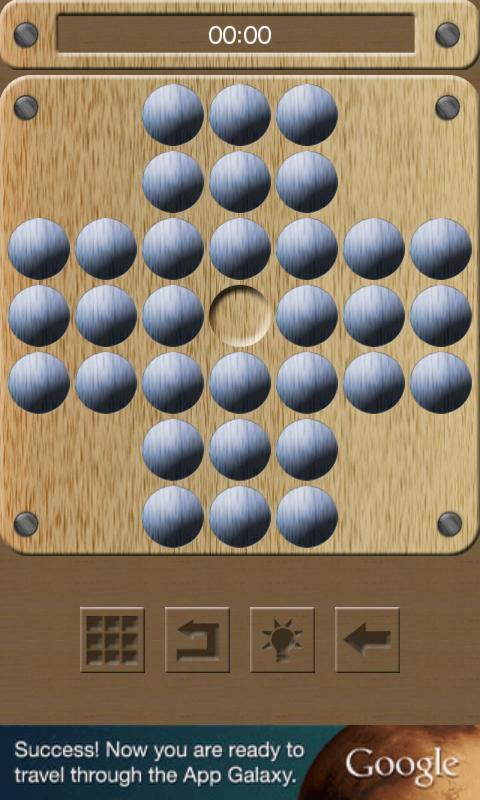

This can be demonstrated through the following argument. leaving the centre hole empty, and playing to leave a single peg in the centre hole). The same notation can be used for the 37-hole board the only difference is that b2, f2, b6, and f6 represent squares on the 37-hole board but not the 33-hole board.įor the 37-hole game, there is no solution for the centre-complement game (i.e.

For example, the central square can be denoted as d4. Several different systems of notation are in use the one used by Beasley in The Ins & Outs of Peg Solitaire labels the seven columns a through g and the seven rows 1 through 7, so each hole is denoted by its row and column reference. The 33-hole board has come to be the standard-sized board in most countries, although the 37-hole board is the most common board in France and can be found elsewhere.īefore discussing a solution, it is convenient to introduce a suitable notation. The 33-hole board was first mentioned in Unterricht in der natürlichen Magie by J. The board shown in the engraving mentioned above is the 37-hole board. Because of the simplicity of the game, it is not inconceivable that some version of this game could have been played well before these dates, however. The earliest known reference to the game is the 1697 engraving Madame la Princesse de Soubize joüant au jeu de Solitaire by Claude-Auguste Berey, and the earliest textual reference was written by Gottfried Leibniz in 1710. Many legends as to the game's origins exist, but all lack evidential support. The game, and the solvability of various positions, are also of mathematical interest. The objective of the game is to remove all the pegs but one, and have the remaining peg end up in the centre square of the board. Moves are made by jumping one peg over another horizontally or vertically, and removing the jumped peg. While many different boards exist, the most common is played on a 33-hole board. However, solving the game is more complicated than it looks. Its straightforward rules have made it a widely-played game, with millions of sets in existence, a set being a not-uncommon present.

In particular, we show that the set of configurations that can be reduced to a single peg forms a regular language, and that a linear-time algorithm exists for reducing any configuration to the minimum number of pegs.Peg Solitaire (in British English referred to as just Solitaire, while the latter term, in American English, refers to the type of card game known in British English as Patience) is a single-player board game. (Cristopher Moore, David Eppstein) - From the abstract: We solve the problem of one-dimensional peg solitaire. It is complemented by his more theoretical Analysis of Peg Solitaire page. (Jaap Scherphuis) - Jaap's page has a concise, memorable solution to the 32-peg "classic," or "central complement" puzzle, and some enumerative results. (John Beasley) I recommend Beasley's out-of-print book The Ins and Outs of Peg Solitaire, but if you can't find it, there is a generous amount of interesting reading on his web page, including more recent writings. (George Bell) A 2016 paper on computer search for particularly challenging solitaire problems, as well as symmetric ones. (George Bell) This article from Mathematics Magazine is a good place to start reading about the mathematical theory of the game. You might want to start with one of the following articles instead. However, it is so comprehensive that it can be overwhelming.
#Peg solitaire solution plus
George Bell's collection of information about peg solitaire is the ne plus ultra, and his list of references is so extensive that this one is practically redundant. Peg Solitaire is rich in algebraic, combinatorial, and algorithmic theory. The difficulty ratings are subjective, so take them with a grain of salt. The collection aims to be interesting, and well-graded in difficulty, rather than comprehensive. Of the remaining problems, some I drew up by hand, and some were computer-generated. I modeled the graphics here on that version of the game. Perhaps you had the same one, the one with the professorial owl on the box top. Some of the problems in this collection are drawn from the charming New Problems in Puzzle-Peg booklet (copyright 1929) included with the solitaire board I had as a child.


 0 kommentar(er)
0 kommentar(er)
